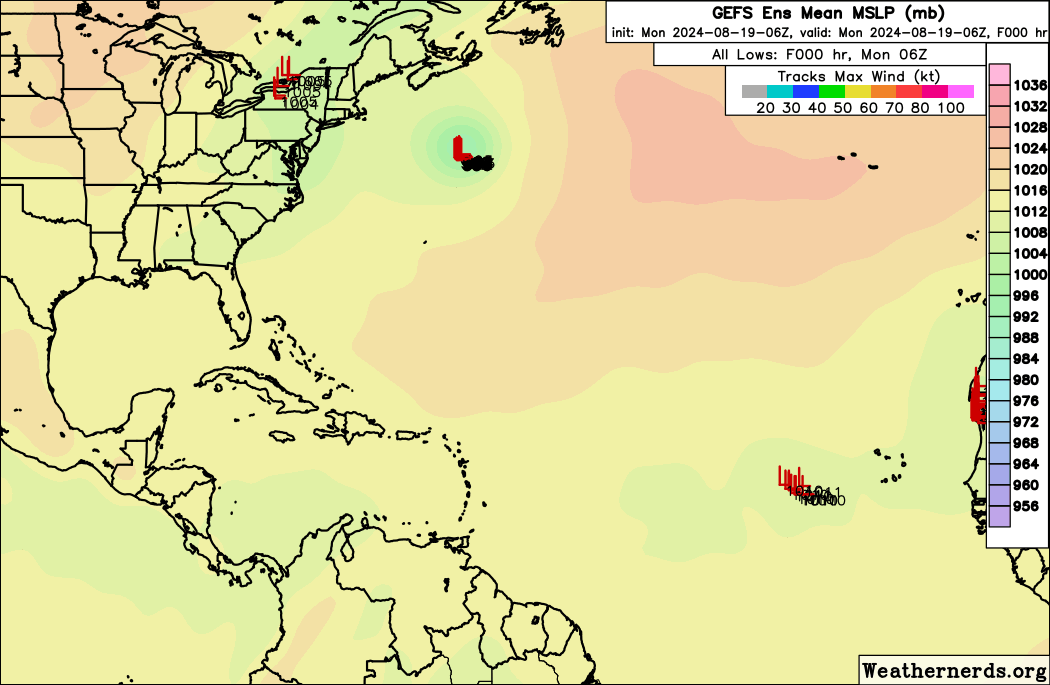
What I find a bit more interesting is a wave before that. The run shows a wave at 43W slowly curving up during 8/22-24 while remaining stationary, with a low that peaks at 1009 mb. While not clear from the precipitation map, it almost looks like a weak TD. The system is short-lived, though I can't tell if it's due to dry air or shear.

The real curiosity is not with this run alone, but with the trend. For the last 5 runs (shown below), you can see the wave becoming better defined, less strung out, and slower. I wonder if this will be some sort of a trend for model depictions of MDR conditions in general, either just for ICON itself or also for other models (it doesn't have to be specific to this wave).

Edit: Looking at 0z GFS, there is a very, very, very weak vorticity signature in the central Atlantic that slows down during the same time frame as ICON, becoming the most "well-defined" at 108 hours and then again at 144-150 hours. This is not even close to development, but I wouldn't be surprised if the system becomes more pronounced in later runs. (Watch the area around 40-43W.)

















